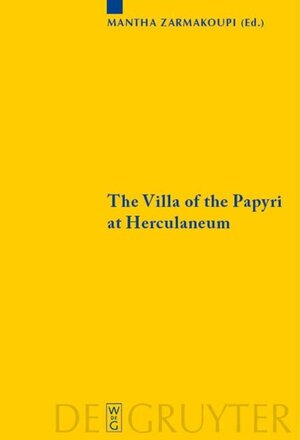
×
![Buchcover ISBN 9783110215434]()
„Unbestritten ist. dass der vorliegende Band einen vielschichtigen Einblick in aktuelle Fragen bietet, die an die Villa dei Papiri heranqetragen werden, und nicht zuletzt durch die umfangreiche Bibliographie auch einen quten Ausgangspunkt für den Eintritt in den wissenschaftlichen Diskurs um ebendiese Frasen darstellt.“Jörn Lang in: Gymnasium 3/2011 „[...] the book is a welcome addition to the literature available on Herculaneum in general and the ‘Villa dei Papiri’ in particular.“Jan P. Stronk in: BMCR 2011.10.58
The Villa of the Papyri at Herculaneum
Archaeology, Reception, and Digital Reconstruction
herausgegeben von Mantha ZarmakoupiThe Villa of the Papyri is a unique archaeological site and has been very influential in the field of classical studies. The papyri (the only intact library to survive from Greco-Roman antiquity) and bronze sculptures found in the villa have contributed to our knowledge of the ancient world and the villa has become for us the “ideal model” of Roman luxury villa culture. This volume brings together papers delivered by experts in various fields addressing the cultural significance of this ancient site in its contemporary Roman context as well as its cultural reception from its discovery over two hundred and fifty years ago to the most recent excavations in the late twentieth century. They also explore the ways in which digital archaeology can assist our efforts to understand and investigate ancient sites. Topics treated include the Villa’s architecture, decoration, and content (i. e., wall-paintings, sculptures, and papyri); their reception since the 18th century; and the current state of knowledge based on the recent partial excavations in the Villa, presented here in English for the first time. Furthermore, the use of digital models of the Villa that incorporate the data from the new excavations and a discussion on the ways in which such models may be used for educational and research purposes are also presented.




